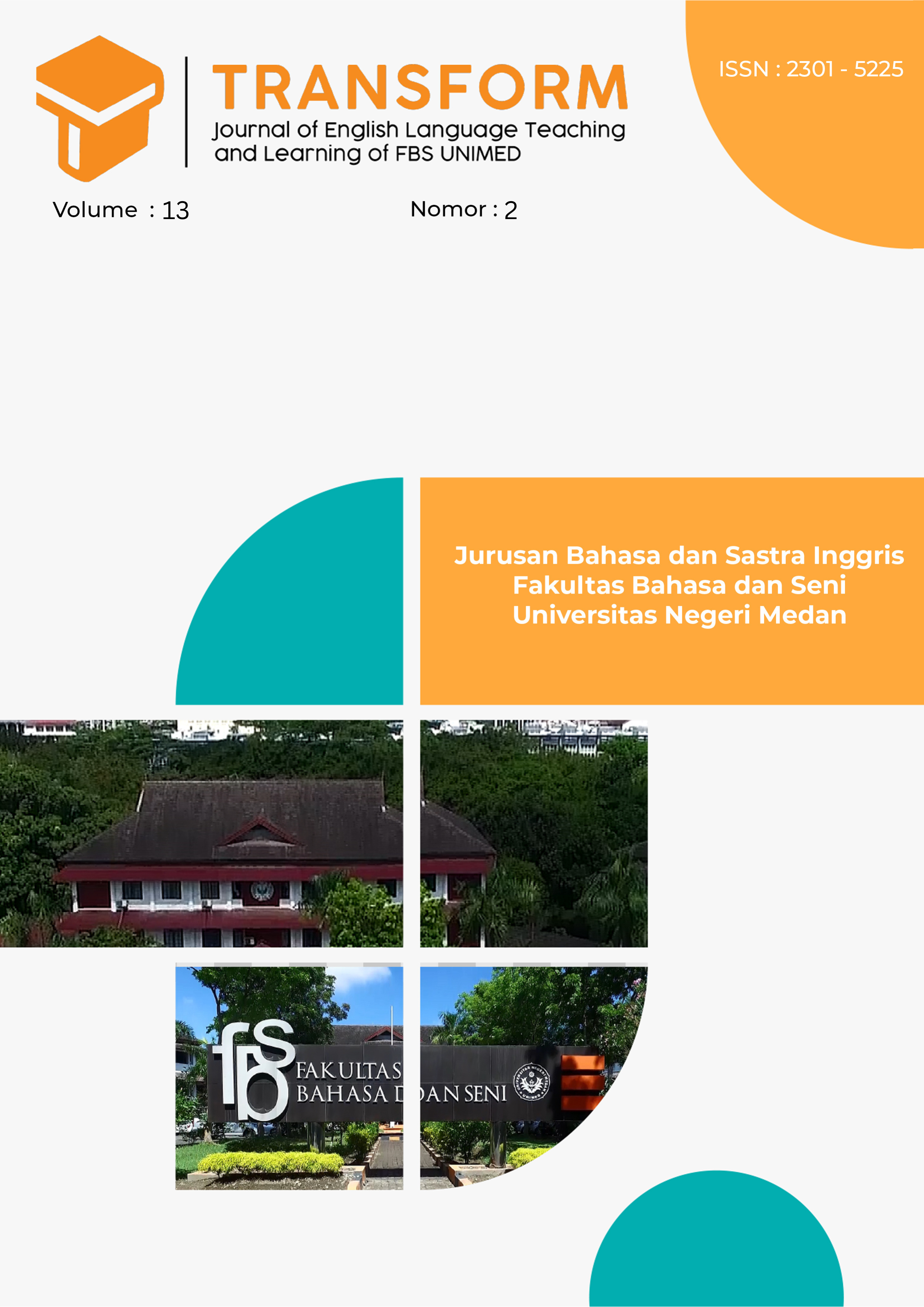Clauses (Types of Clauses: Main & Subordinate Clasuses)
DOI:
https://doi.org/10.24114/tj.v13i2.66787Keywords:
Clause, Independent Clause, Dependent Clause, Subordinate ConjunctionAbstract
This comprehensive study investigates the crucial role of clauses in English sentence structure, primarily focusing on the distinction between independent clauses and dependent clauses. This research explores how these two types of clauses function as essential components in forming sentence structures, facilitating the expression of complex ideas and effective communication. The investigation reveals that independent clauses possess the ability to position alone as thorough sentences, while dependent clauses depend on independent clauses on the context and meaning. The study identifies various types of dependent clauses and examines how they contribute to more complex sentence structures. Furthermore, this research highlights the importance of subordinating conjunctions in introducing dependent clauses and establishing logical relationships within sentence structures. By elucidating the functions of independent and dependent clauses, this study provides valuable insights into the formation of effective sentence structures. The research demonstrates how the strategic use of independent and dependent clauses, along with the appropriate utilization of subordinating conjunctions, can enhance the quality and complexity of sentence structures. This analysis offers a deeper understanding of sentence structure mechanisms, contributing to broader linguistic theories and applications. The study emphasizes the critical role of clause analysis in developing strong writing skills and effective communication. The results indicate that a solid understanding of independent clauses, dependent clauses, and the use of subordinating conjunctions is crucial in creating varied and expressive sentence structures. This study contributes significantly to the considerate of sentence structures in English, underscoring the importance of independent clauses, dependent clauses, and subordinating conjunctions in language learning, teaching, and research. The study concludes that mastery of various clause types and the ability to combine them effectively are key to enhancing language proficiency and communication skills.References
Aarts, B. (2011). Oxford modern English grammar. Oxford University Press.
Banks, D. (1995). There is a cleft in your sentence: Less common clause structures in scientific writing.
Celce-Murcia, M., & Larsen-Freeman, D. (1999). The grammar book: An ESL/EFL teacher's course (2nd ed.). Heinle & Heinle.
Crystal, D. (2003). The Cambridge encyclopedia of the English language (2nd ed.). Cambridge University Press.
Fowler, R. (1983). The little Oxford dictionary. Oxford University Press.
Greenbaum, S., & Nelson, G. (2002). An introduction to English grammar (2nd ed.). Pearson Education.
Huddleston, R., & Pullum, G. K. (2002). The Cambridge grammar of the English language. Cambridge University Press.
Li-hon, T. (2003). English syntax and grammar. Language and Linguistics Journal.
Levelt, W. J. M. (1989). Speaking: From intention to articulation. MIT Press.
Merriam-Webster Dictionary. (2024). Clause. Merriam-Webster, Incorporated.
Muchnová, D. (2023). English syntax: Clauses and sentence structure. Language Studies Review.
Musan, R. (2002). The German perfect: Its semantic composition and its interactions with temporal adverbials.
Pinker, S. (1994). The language instinct: How the mind creates language. William Morrow and Company.
Quirk, R., Greenbaum, S., Leech, G., & Svartvik, J. (1985). A comprehensive grammar of the English language. Longman.
Radford, A. (2009). Analytic syntax. Cambridge University Press.
Schwartz, A. H. (2011). GENERAL ASPECTS OF RELATIVE CLAUSE FORMATION.
Schwartz, E. (2011). Grammatical components in English language. Grammar Today.
Strunk, W., Jr., & White, E. B. (1979). The elements of style. Macmillan.
Volkova, S., & Korotun, L. (2023). The role of syntax in English language learning. Language Teaching and Research.
Downloads
Published
How to Cite
Issue
Section
License
Copyright (c) 2025 Marino Sihombing

This work is licensed under a Creative Commons Attribution-ShareAlike 4.0 International License.
Authors who publish with this journal agree with the following terms:
- Authors retain copyright and grant the journal right of first publication with the work simultaneously licensed under a Creative Commons Attribution License that allows others to share the work with an acknowledgment of the work's authorship and initial publication in this journal.
- Authors are able to enter into separate, additional contractual arrangements for the non-exclusive distribution of the journal's published version of the work (e.g., post it to an institutional repository or publish it in a book), with an acknowledgment of its initial publication in this journal.
- Authors are permitted and encouraged to post their work online (e.g., in institutional repositories or on their website) prior to and during the submission process, as it can lead to productive exchanges, as well as earlier and greater citation of published work (See The Effect of Open Access).
- This work is licensed under a Creative Commons Attribution-ShareAlike 4.0 International License.








